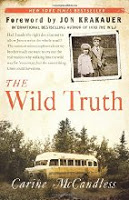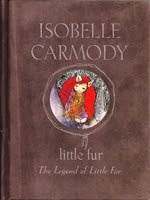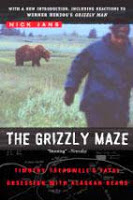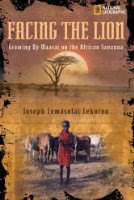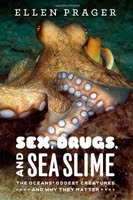by Harold W. Cormick and Tom Allen
with Captain William E. Young
This is an older, very comprehensive book about sharks and their relatives the skates and rays. I\’m glad I read the entire thing because it turned out to be quite interesting, although in the beginning I had some doubts. The first section is about reported shark attacks on humans. Although I could tell the authors were trying to be purely factual the stories still felt rather sensationalist to me, even as they were told in a dry style. Which was odd and after a while kind of boring….
The next section of the book turns the tables, and tells how mankind has waged war upon sharks. In some cases this was literally true- large parties going after individual sharks when an attack happened, men with firearms protecting beaches. There are pages and pages about attempts made to learn what prompts shark attacks (nothing conclusive) and efforts made to create \”shark repellent\” devices- some of them appeared more-or-less effective and the calculated reasons intriguing.
Next part of the book is a large excerpt taken from Captain William E. Young\’s ship logs and personal writings. He first started hunting sharks as a young man and continued well into his seventies. Became renowned for his determination, bravery and skill and eventually travelled the world setting up shark fisheries and teaching local people his methods. It was well-written and very interesting although strange to read because views have changed so drastically. When Young was in his heyday, people thought nothing of regularly hauling trash out to dump at sea. Carcasses of horses in particular lured sharks and avid shark hunters would wait in the trash area to ambush them. As sharks seemed infinitely plentiful and were seen as a nuisance for the damage they did to commercial fishing operations, it was completely accepted for men to hunts sharks relentlessly. So many were killed that they tried to come up with ways to use the dead sharks at a profit. Shark meat was sold under other names so people would get over their repugnance at eating them (in the States- in many other countries it was normal to eat shark). Hides were tanned and used as leather. Oil was extracted- shark liver was found to be so high in vitamin A that for a long time it was a regular additive in milk, until vitamin A was synthesized. And so on. Teeth and jawbones sold as curios. And the remainder ground up as fertilizer (or put into animal feed).
There are several chapters on the many ways shark is prepared for eating (many recipes included in an appendix), another on legends regarding sharks, taboos and myths surrounding them.
The final chapters are about the classification, nomenclature and identification of sharks- some of it quite confusing and I am sure a lot of this info is out of date. Quite a few times going to the computer to look up more about a species, only the scientific name would get me an accurate result, the common names having change completely. It might sound like the dullest part of the book, but I liked seeing the wide variety of forms sharks and their cousins take- especially the oddities like hammerheads, thrashers, goblin sharks, and very small species that live in obscure depths. Smallest known shark when this book was written is Etmopterus hillianus which is 12\” at maturity. Online you can find pictures of the dwarf lanternshark in someone\’s hand- they average just over 8\”. At this publication, approximately 350 shark species were known. Today there are 440 identified.
Well- here\’s just a few of the things that stood out to me from this reading: tales of huge sharks caught and landed- some larger than the fishing boat itself. A manta ray so big it took twenty-two young men to carry it out of the surf. Picture of a female hammerhead with her twenty-two unborn pups laid out in a row next to the body. I knew that many sharks bear live young; I wasn\’t aware that some can change the color of their skin to blend in with the ocean floor, others have poisonous spines on their dorsal fins, and a few are bioluminescent. Closeup photos of the denticles in shark skin are simply amazing. Their hides are so abrasive that just rubbing against it will take a person\’s skin off. In spite of the many tales of horror in this volume, I remain skeptical whether any shark can be really considered a man-eater. While there were many reports of entire animal carcasses or skeletal remains found in sharks- a horse, a sea-lion, another shark etc etc- of humans only one such case was told. Usually it was just an arm, a foot or hand- lending me to believe that sharks tend to bite people and then move on, realizing humans aren\’t so good to eat…
Not all sharks have to swim constantly to breathe- many species rest on the bottom and use muscles to pump water through their gills- but they do have to swim continually to stay afloat as they don\’t have a swim bladder (but some are partly kept afloat by the buoyancy of the liver).
I\’m curious why sharks have a notch shape on the lower edge of the upper tail lobe- nobody knew back then and today nobody seems to have a clear answer, either.
Some sharks live in freshwater! There are quite a few river species, including one that was very numerous in the Ganges River (now it is critically endangered). There is also a shark that populates Lake Nicaragua. There is a river that connects this large lake to the sea, it is no longer navigable for ships but used to be- the book speculates that either: the lake used to be a bay and when a catastrophic event (earthquake) suddenly cut off the lake from the sea, ancestors of these sharks were trapped there or sharks used to navigate up the river when it had better passage. I looked this up- it has been proven that sharks still do navigate the river. Sharks in the lake were tagged, and many of them later found at sea.
Some famous people are in this book, because they were avid shark fishermen. Including the authors Earnest Hemmingway and Zane Grey. There is also brief mention of Gavin Maxwell\’s attempts to set up a shark fishery (he wrote Ring of Bright Water). In sum, my favorite part of the book remains the sections that quoted Captain Young, so I think I would enjoy reading his firsthand account someday.
If you thought all this interesting, maybe you should find yourself a copy of this book! Even though it is outdated, still some pretty good reading.
Rating: 3/5 415 pages, 1963


